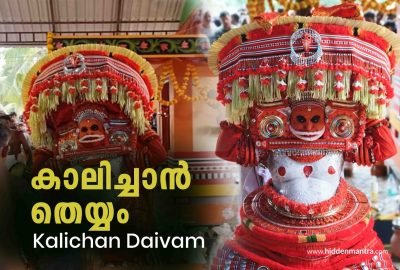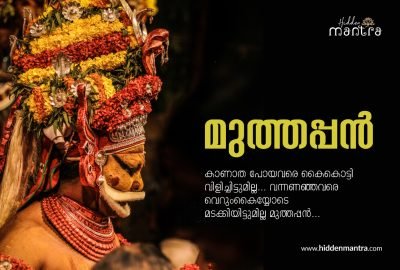
Theyyam
Theyyam, a famous religious art form in Kolathunadu (the Kingdom of Cannanore), receives significant prominence. People perform the captivating Theyyam dance to venerate ancestors in the presence of groves, residences, and the village shrine.
The Theyyam season begins on the tenth day of the Malayalam month of Thulam (October/November) and concludes by the end of June. The core concept of the Theyyam performance revolves around man embodying a deity and engaging in worship and appeasement through dance.
In return, the Gods promise prosperity and harmony for society. Diverse ethnic groups, including Vannan, Malayan, Mavilan, Velan, Munnoottan, Anjunnoottan, Pulayar, and Kopalar, actively participate as Theyyam performers.
Theyyam Performance
During Theyyam performances, the participants conduct numerous rituals. The organizers first notify and inform the performer, known as the Kolakaran, about the scheduled performance date. The opening segment of the Theyyam performance, referred to as Vellattam or Thottam, is presented in a light-hearted manner without elaborate costumes and is also called Thottampattu. The performer actively narrates the history and characteristics of various Theyyams.
The Kolakaran actively engages in the Theyyam performance with his assistants. Thottampattu, the opening segment, accompanies primary instruments such as Chenda, Veekan Chenda, Ilathalam, and Kuzhal. The actor adorns a tuft of hair on their head and paints their face for the Vellattam segment. It is worth noting that all Theyyams possess the ability to receive Podiyila instead of performing Vellattam.
Following the ritual song (thottam), the Kolakaran steps onto the stage and adorns the appropriate attire and makeup. The performers actively apply various types of facial makeup using colours like Chayilyam, Karimazhi, Aripodi, and Maniyola, which they source directly from nature. Depending on the specific Theyyam being portrayed, distinct costumes, jewellery, and facial makeup are worn by the performers. In some Theyyams, fire is even incorporated into their hair, resembling Theechamundi.
Theyyams, also known as Kaliyattam, traditionally take place once a year in sacred trees and other sacred locations. On the other hand, Perumkaliyattam is a performance that occurs after an extended period of time.
Theyyam In Kerala
Theyyam is a ritualistic artform native to the northern part of Kerala. For villagers, “Theyyam in Kerala” means “God”. Theyyam is a ritual artform that has been in existence even before Hinduism. As per records, now there are over 400 different kinds of theyyam in Kerala. But as per the ancient records, only 39 existed. Among these only 35 are the major ones. Among other names, It is also known as Kaliyattam or Tira. Artform similar to theyyam is found in our neighboring state of Karnataka known as “Bhuta Kola”.
When & Where to Watch Theyyam?
Theyyam festival starts from the 10th day of “Thulam Masam”, the 3rd month in the malayalam calendar and extends till the month of Edavam, the 10th month as per the traditional malayalam calendar. As per the English calendar, this time is from the month of October till May.
There are temples or shrines in each village where theyyam is performed. They are known by different names like Kaavu, Palliara, Kalari, Kazhakam, Ara, Mathilakam, Maadam, Idam, Kazhakam etc.
People belonging to a particular tribe or community perform each theyyam. The most popular tribes or castes are Vannan, Malayan, Anjootan, Munnoottan, Mavilan, Koppalan, Velan, Chinkathan, Kalanadi, Paravan etc. Devakoothu Theyyam, performed in Thekkumbad Kulom temple is the only one theyyam that is performed by a female. Males perform all other theyyams.
Types of Theyyams:
As mentioned before there are 35 major theyyams that all the theyyam practitioners know by heart. These deities are as listed below
1. Banthrukolappan
2. Thai Paradevatha
3. Kaliyaal Bhagavathi
4. Chuzhali Bhagavathi
5. Someswari
6. Paadikkutti
7. Vayathur Kaliyar
8. Keezhoor Sasthavu
9. Puthiya Bhagavathi
10. Madiyan Kshetrapalan
11. Vairajathan
12. Vettakkorumakan
13. Oorpazhassi
14. Ilamkaruvan
15. Bammurikkal
16. Karimurukkan
17. Thekkan Kariyathan
18. Poothadi
19. Thottinkara Bhagavathi
20. Kuttichathan
21. Bhairavan
22. Uchitta
23. Karuval
24. Raktha Chamundi
25. Panchuruli
26. Veeran
27. Veera Kali
28. Maha Ganapathy
29. Yakshi
30. Vishnumoorthi
31. Muchilot Bhagavathi
32. Puli Chamundi
33. Veera Chamundi
34. Kandanar Kelan
35. Vayanattu Kulavan
A brief description on the few famous theyyam in Kerala:
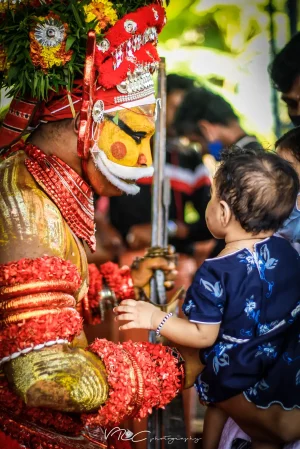
Muthappan Theyyam
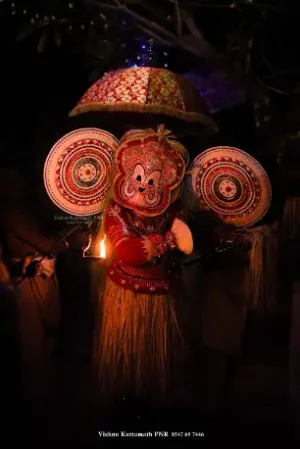
Pottan Theyyam

Vishnumoorthi Theyyam
Also known as Narasimha Murthy, this is the most popular Vaishnava theyyam. Vishnu Murthy theyyam tells the story of Narasimha Avatar and how he ended the reign of Hiranyakashipu, the demon king.
As per the local folklore, she is a virgin Goddess, who is the deity of Vaniya Clan. A scholarly woman who reincarnated as the Goddess by the blessing of Shiva. She is known as Muchilot Bhagavathi as she rested in the home of Muchilot Padanair. Later the family started worshiping her in their home.

Puthiyaramban Daivam
This theyyam is the most famous theyyam in Kerala. The Thiyya community performs Kathivanur Veeran to honor the great warrior Mandhappan Chekavar.

Padikutti Amma

Devakooth Theyyam
This is the only theyyam in Kerala which is performed by a lady. Thekkumbad Koolom temple near Cherukunnu performs this Theyyam once every two years.

Gulikan

Padamadakki Bhagavathy

Manakkott Amma

Kuttichathan

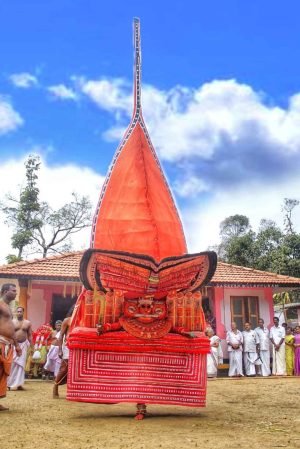
Thai Paradevatha Theyyam
Thaiparadevatha Theyyam represents Badrakali, who was born along with Veerabadran from the hair of Lord Paramashiva. It is believed that Lord Paramashiva beat his hair on the ground in anger upon learning about the suicide of Sathi Devi, who had been insulted by her father Dakshan for not being invited to attend the Yaga. In response to this injustice, Veerabadran and Badrakali went to the Yaga shrine and destroyed it, setting it on fire and beheading King Daksha. Thaiparadevatha Theyyam is a cultural representation of this story and the worship of the deity is believed to offer blessings and protection to devotees.
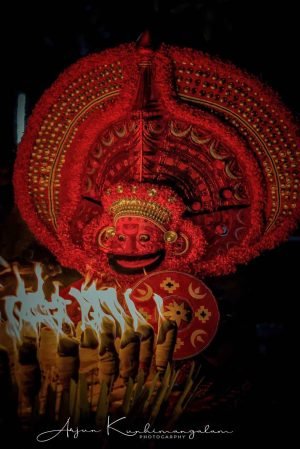
Kathivanoor Veeran Theyyam
Kathivanoor Veeran, also known as Mandhappan holds a place, in the cultural heritage of the North Malabar region in Kerala, India. In Malayalam the name “Veeran” translates to “Hero” in English and this deity embodies the spirit of heroism within the folklore.
According to legend Kathivanoor Veeran is believed to be the manifestation of Mandappan Chekavar, a warrior from the Thiyya community. The myths and tales surrounding Mandappan life and eventual deification continue to thrive through traditions and folklore in the Kolathunadu region.
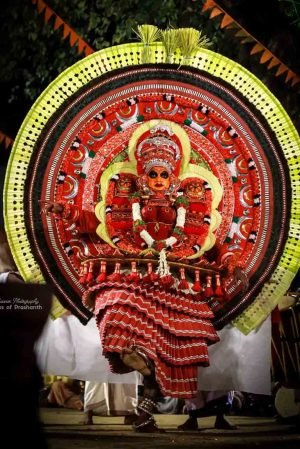
Veera Chamundi Theyyam
Veera Chamundi theyyam is a formidable ritual performed in select locations in the Kasaragod and Kannur regions of Kerala during the annual Kaliyattam thira festival. It portrays the fierce Mother Goddess, Bhagavathi, who is renowned for her victory over Chanda and Munda. A designated place is set aside for her worship to prevent her from causing harm to people, their belongings, or livestock. The story of Veera Chamundi theyyam centers around her use of supernatural powers and thirst for blood, leading to disruptions in the region. An annual theyyam ceremony is conducted to appease her and safeguard the community.
Theyyam In Kerala is more than an art. For people of northern Kerala, theyyam is their way of communicating with God. The performers undergo strict rituals before they perform the theyyam. Theyyam is accompanied with folk musical instruments like chenda, tudi, kuzhal and veekni. In theyyam, the dance steps are known as Kalaasams. A theyyam usually includes dance, vocal recitations, musical instruments etc.
Let Hidden Mantra be your guide to exploring the hidden treasures of Kerala’s culture!!!
Theyyam FAQ
Theyyam is a popular ritual art form that originated in North Kerala and is especially prevalent in the Kannur district. It is a form of worship that involves dance, music, and rituals performed in front of shrines and ancestral houses. Theyyam is characterized by vibrant costumes, elaborate makeup, and headdresses, and the performers are believed to embody the spirits of gods, goddesses, and heroes. Kannur is known as the cultural capital of Kerala due to its rich tradition of art forms, and Theyyam is one of the most prominent among them. It is an integral part of the social and cultural life of the people in Kannur and is performed during temple festivals and other important occasions.
If you are interested in watching Theyyam in Kerala, the best time to witness this traditional art form is during the winter months between December and April when the temple festivals take place. The performances are held in various temples across the Kannur district, with some of the most famous ones being the Sri Muthappan Temple, Kalarivathukkal Bhagavathy Temple, and the Parassinikadavu Muthappan Temple. You can also visit cultural centers and museums in Kannur that showcase and promote the Theyyam art form. Additionally, there are several Theyyam performance tours organized by local tour operators that provide an opportunity to experience this unique cultural expression up close.
No, Theyyam and Kathakali are not the same. They are two distinct forms of traditional performing arts that originated in different regions of Kerala and have their own unique styles, themes, and techniques.
Theyyam is a ritualistic art form that originated in North Kerala and is performed in front of shrines and temples. It is characterized by its vibrant costumes, elaborate makeup, and headdresses, and the performers are believed to embody the spirits of gods, goddesses, and heroes. Theyyam is a form of worship that involves dance, music, and rituals.
Kathakali, on the other hand, is a highly stylized classical dance-drama that originated in the southern region of Kerala. It combines elements of dance, drama, music, and ritual, and is known for its elaborate makeup, costumes, and facial expressions. Kathakali often depicts stories from Indian epics such as the Ramayana and Mahabharata, and the themes are usually based on the struggle between good and evil.
Both Theyyam and Kathakali are significant cultural expressions of Kerala and are highly appreciated by locals and tourists alike. However, they differ in terms of their origin, themes, and performance styles.
The Theyyam that is related to Onam is known as Onathar. Onathar is a form of Theyyam that is performed during the Onam festival, which is a major harvest festival in Kerala. Onathar Theyyam is believed to represent the spirit of King Mahabali, who is the central figure of the Onam festival. The performance of Onathar Theyyam involves elaborate makeup, costumes, and headdresses, and the dancers portray the benevolent and just character of King Mahabali. The Onathar Theyyam performance is usually held in temples and public spaces during the Onam festival and is a major attraction for tourists visiting Kerala.
There are several famous Theyyam temples in Kannur district of Kerala.
Here’s a list of some of the famous Theyyam temples in Kannur district:
- Sri Muthappan Temple, Parassinikadavu
- Kalarivathukkal Bhagavathy Temple, Nileshwar
- Muchilot Bhagavathy Temple, Panoor
- Peralassery Subrahmanya Swami Temple, Peralassery
- Thottada Sri Raktheswari Temple, Thottada
- Kandankali Bhagavathy Temple, Valapattanam
- Pullur Perumal Temple, Pullur
- Thiruvangad Sree Ramaswami Temple, Thalassery
- Kanathoor Nalvar Bhoothasthanam, Kanathoor
Yes, Muthappan is closely associated with the Theyyam tradition of Kerala. Muthappan is a folk deity worshipped in the North Malabar region of Kerala and is considered to be a manifestation of Lord Shiva and Lord Vishnu. Muthappan is often depicted in the form of a Theyyam, with elaborate costumes, makeup, and headdresses. The Theyyam performance of Muthappan is an important aspect of the worship of this deity and is believed to have healing and protective powers. The Sri Muthappan Temple in Parassinikadavu, Kannur district, is dedicated to the worship of Muthappan and is famous for its annual festival that features several Theyyam performances, including the Muthappan Theyyam.

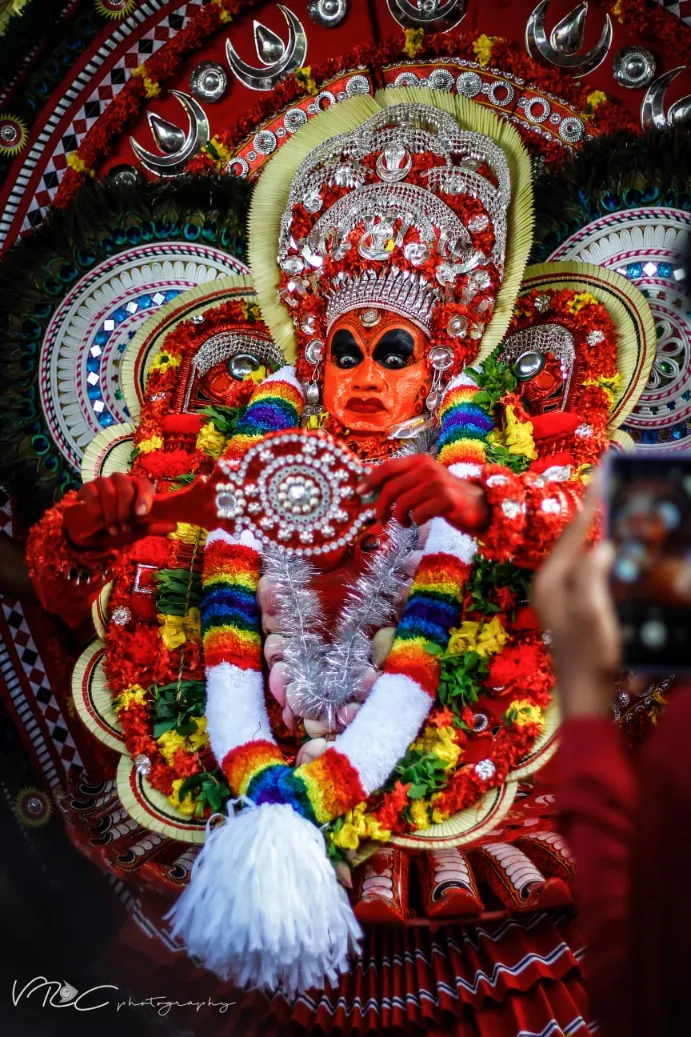

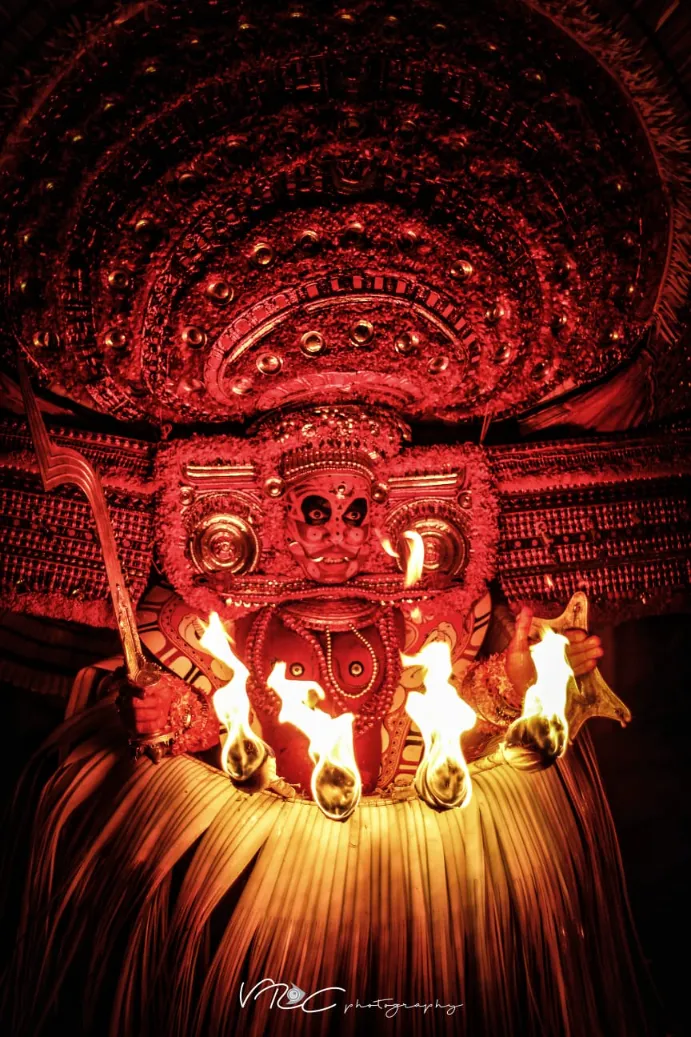

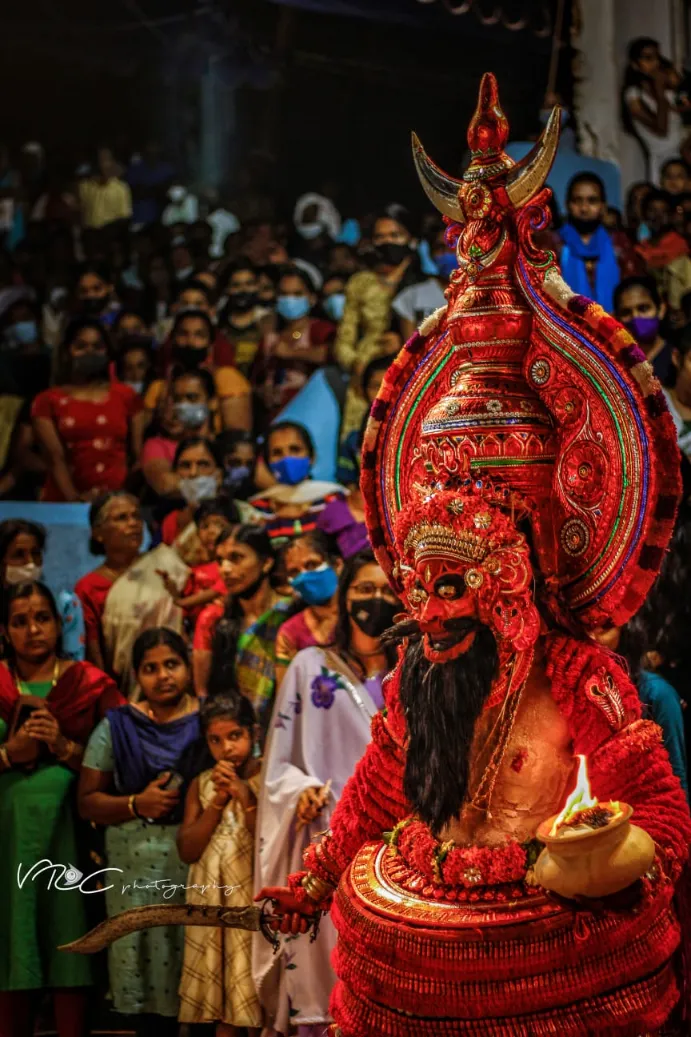
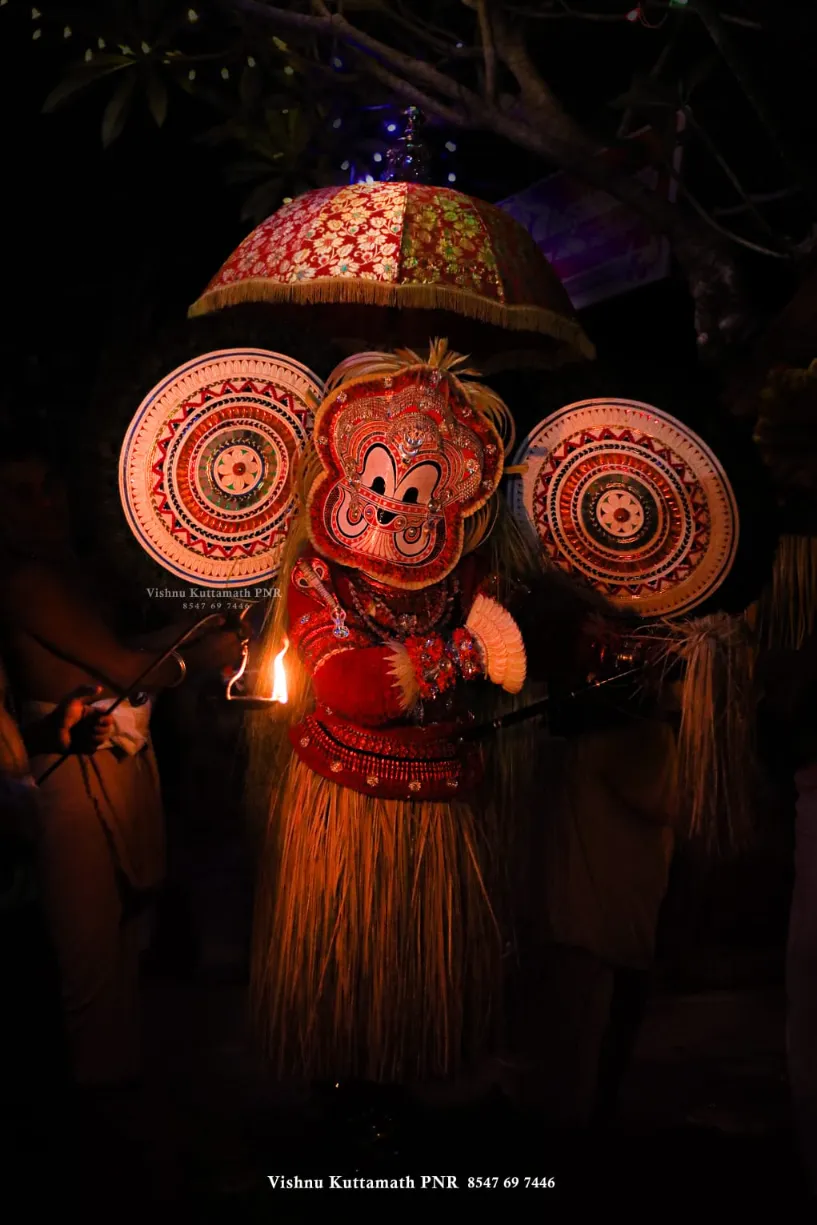
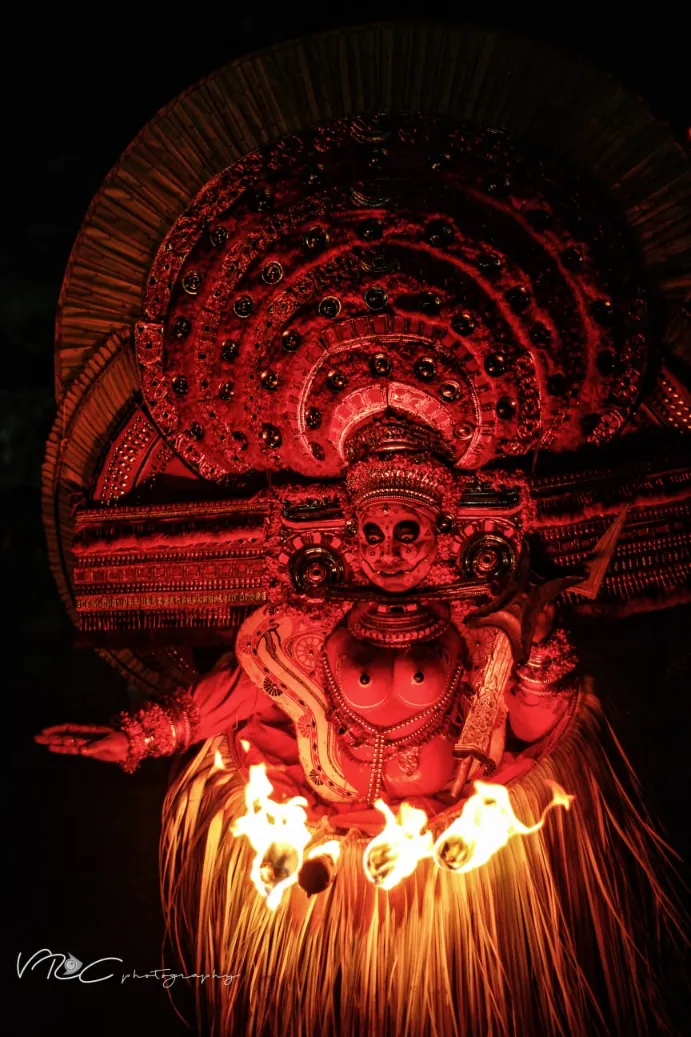



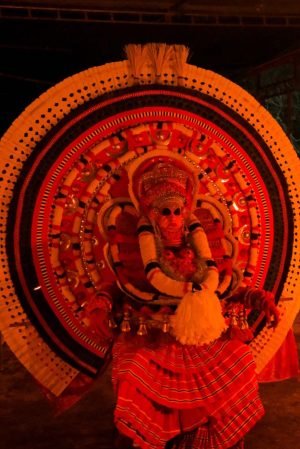
![Vayanattu Kulavan Theyyam [Image Credit: Prashanth Puthiyakandam] Vayanattu Kulavan Theyyam [Image Credit: Prashanth Puthiyakandam]](https://hiddenmantra.com/wp-content/uploads/elementor/thumbs/WhatsApp-Image-2024-05-24-at-11.15.00-AM-qomag5s7znowsljlwkowiqdo50ky1145pulkx31g24.jpeg)
